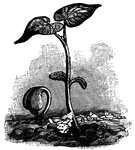
Kangaroo
"The Kangaroo is an animal of Australia, first observed by a party of sailors on the coast of New South…
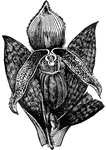
Lady's Slipper
"Lady's Slipper is a genus of plants. The genus is remarkable for the large inflated lip of the corolla.…

Lake Dwellings
"The earliest account of lake dwellings is to be found in Herodotus, who describes a Thracian tribe…
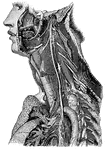
Trunk of the Pneumogastric Nerve
"Showing its distribution by its branches and ganglia to the larynx, pharynx, heart, lungs, and other…

External auditory canal
"A Cast of the External Auditory Canal. The auditory canal is a passage in the solid potion of the temporal…
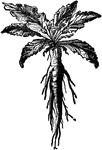
Mandrake
"Mandrake is a perennial herb. From the rude resemblance of the bifurcated root to the human figure…

Marsh Mallow
"The Marsh Mallow is a softly pubescent plant, with axillary cymes of large rosy leaves. a,…

Mistletoe
"Mistletoe is a plant parasitic on the apple and other fruit trees, on the thorn, the oak, the poplar,…

Nelumbium
"Nelumbium is the typical and only genus of the order Nelumbiaceæ. The species are remarkable…

Nylghau
"The Nylghau is the largest of the few true antelopes found in India, where it is confined to the central…
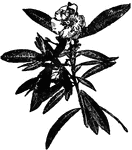
Oleander
"The Oleander is the common and sweet-scented oleander. They have lanceolate coriaceous leaves, with…

Rock Owl
"The owl is a popular name for any nocturnal, raptorial bird, of which about 200 species are known.…
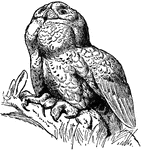
Great Snow Owl
"The owl is a popular name for any nocturnal, raptorial bird, of which about 200 species are known.…
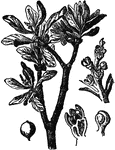
Loranthus Europaes
"Parasitic Plants are those which are unable to nourish themselves and prey upon other plants or animals;…

Brugmansia Zipple
"Parasitic Plants are those which are unable to nourish themselves and prey upon other plants or animals;…
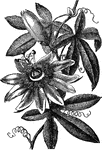
Passion Flower
"Pasiflora is the passion-flower. Generally climbing herbs or shrubs. Fruit succulent, seeds many. Found…

Phylloxera
"Pylloxera is a genus of insects allied to the Aphis and Coccus families. The Phylloxeridæ attach…
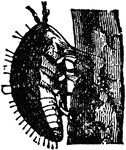
Phylloxera
"Pylloxera is a genus of insects allied to the Aphis and Coccus families. The Phylloxeridæ attach…
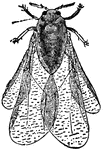
Phylloxera
"Pylloxera is a genus of insects allied to the Aphis and Coccus families. The Phylloxeridæ attach…

Pineapple
"Pineapple is a plant of the natural order Bromeliacæ. The flowers rise from the center of the…
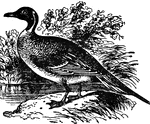
Pintail Duck
"The Pintail Duck has the upper parts and flanks ash, with narrow stripes of black; under parts white;…
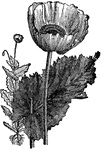
Opium Poppy
"Poppy is a genus of plants, of which there are numerous species, mostly natives of Europe and Asia,…
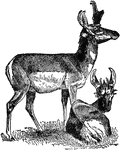
Prong-horn Antelope
"The Prong-horn Antelope inhabits the W. parts of North America, from 53 degrees N. to the plains of…
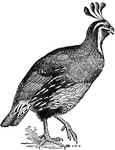
Lophortyx Californicus Quail
"The Quail is a small game bird; the Virginia species is common in North America, and so far south as…

Aratrum
"A plough. Among the Greek and Romans the three most essential parts of the plough were-the plough tail,…

Aratrum
"A plough. Among the Greek and Romans the three most essential parts of the plough were-the plough tail,…

Quassia
"The Quassia is a tree cultivated in the West Indies and the parts adjacent. It has terminal clusters…

Water Rice
"Rice is a well known genus of grasses, having panicles of one-flowered spike-lets, with two very small…

Ring
"A Ring is any circle or section of a cylinder. Rings of gold, silver, and of other metals and materials…

Ring
"A Ring is any circle or section of a cylinder. Rings of gold, silver, and of other metals and materials…

Roebuck
"A Roe (Capreolus caprea) is a small species of deer inhabiting Europe and some parts of Western Asia.…
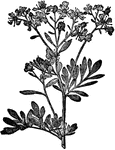
Rue
"The common rue is a half-shrubby plant, two or three feet high, of a fetid odor and an acrid taste.…
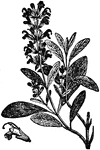
Sage
"Sage is a plant much used for flavoring meats, etc. It has blue flowers, and has run into many varieties.…

Sand Blast Apparatus
"Sand Blast is one of the most wonderful uses of sand, by means of which glass, stone, metals, or any…

Snipe
"Snipe is the name of a common family of birds. The common American snipe is about equal in size to…
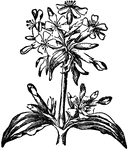
Soapwort
"Soapwort (Saponaria), a genus of plants of the natural order Caryophyllaceæ; so called because…
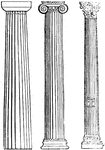
Columna
"A pillar or column. The use of the trunks of trees placed upright for supporting buildings, unquestionably…

Currus
"A chariot, a car. These terms appear to have denoted those two wheeled vehicles for the carriage of…

Currus
"A chariot, a car. These terms appear to have denoted those two wheeled vehicles for the carriage of…
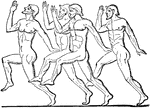
Foot-race
"The Olympic games were of greater efficacy than the Amphictyonic Council in promoting the spirit of…

Wrestling
"The Olympic games were of greater efficacy than the Amphictyonic Council in promoting the spirit of…

Hurling the javelin
"The Olympic games were of greater efficacy than the Amphictyonic Council in promoting the spirit of…
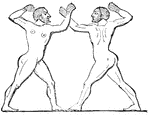
Boxing
"The Olympic games were of greater efficacy than the Amphictyonic Council in promoting the spirit of…

Tansy
"Tansy is a genus of Compositæ, numbering about 50 species of strong-scented herbs, often shrubby…
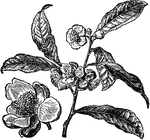
Tea Plant
"Tea is the dried leaf of an evergreen shrub of the natural order Ternstœmiaceæ. It includes the China…
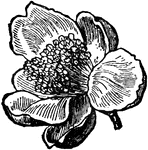
Tea Flower
"Tea is the dried leaf of an evergreen shrub of the natural order Ternstœmiaceæ. It includes…
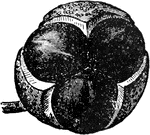
Tea Fruit
"Tea is the dried leaf of an evergreen shrub of the natural order Ternstœmiaceæ. It includes…

Liber
"The most common material on which books were written by the Greeks and Romans, was the thin coats or…

Libra
"A balance, a pair of scales. The principal parts of this instrument were: 1. The beam. 2. The two scales,…
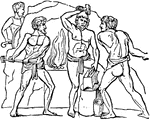
Malleus
"A hammer, a mallet. In the hands of the farmer the mallet of wood served to break down the clods and…

Eyebright
A genus of plants of natural order Scropulariaceæ. having a tubular calyx, the upper lip of the…

Fallow Deer
A species of deer well known in Britain, being very commonly kepts in parks, as it is also in most parts…
Pons Cestius
"A bridge. As the rivers of Greece were small, and the use of the arch known to them only to a limited…

Pons Aelius
"A bridge. As the rivers of Greece were small, and the use of the arch known to them only to a limited…
Pons Ariminum
"A bridge. As the rivers of Greece were small, and the use of the arch known to them only to a limited…
Pons Trajan
"A bridge. As the rivers of Greece were small, and the use of the arch known to them only to a limited…
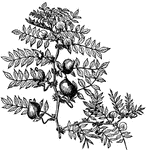
Chick Pea
It grows wild around the shores of the Mediterranean and many parts of the East, producing a puffy pod,…

Chicory
A composite plant common in waste places, found throughout Europe and Asia as far as India, and naturalized…
